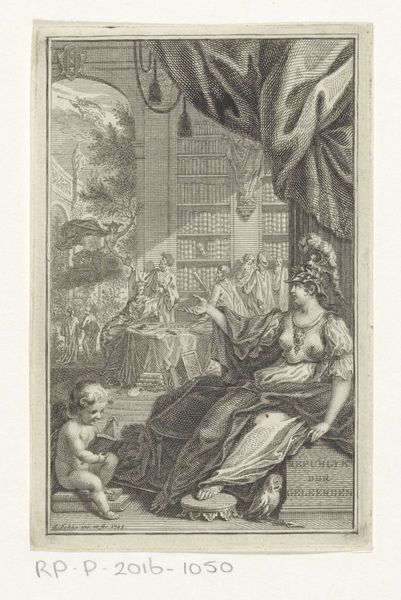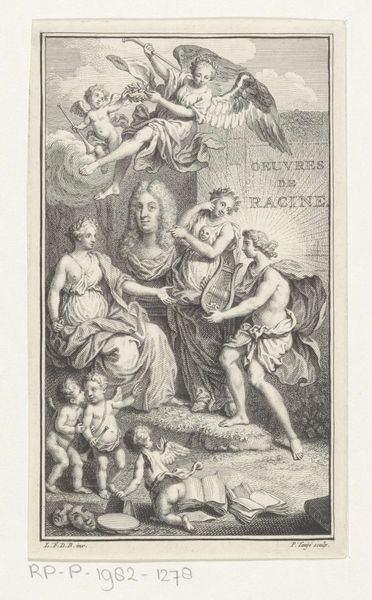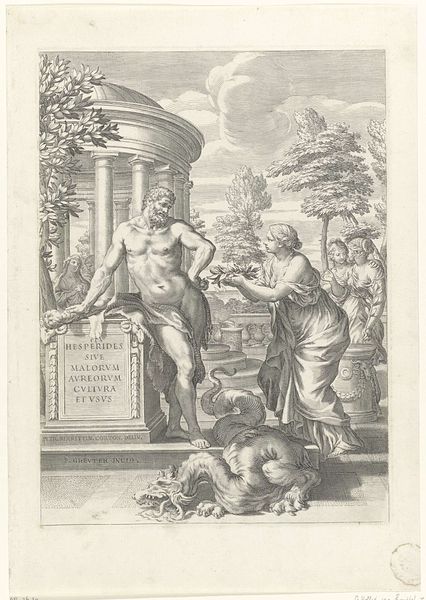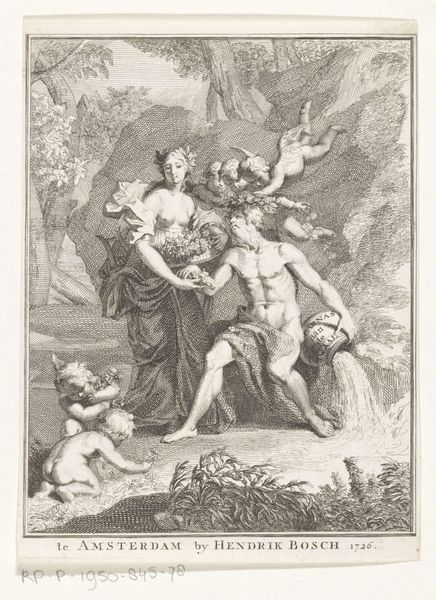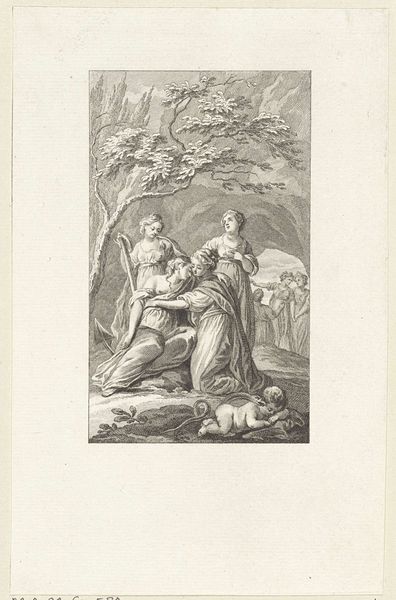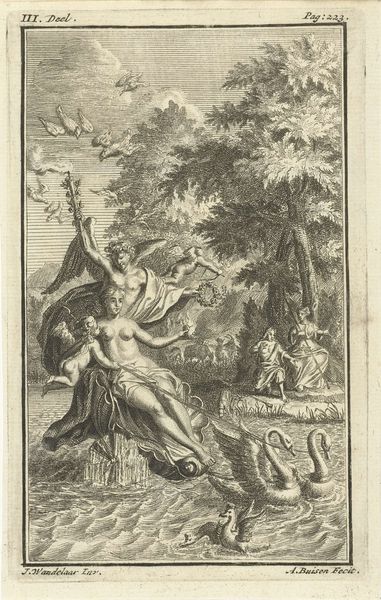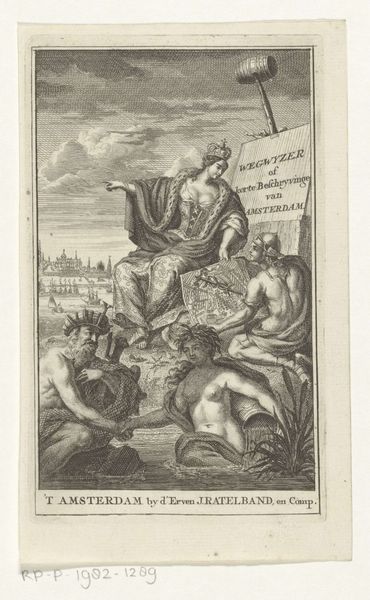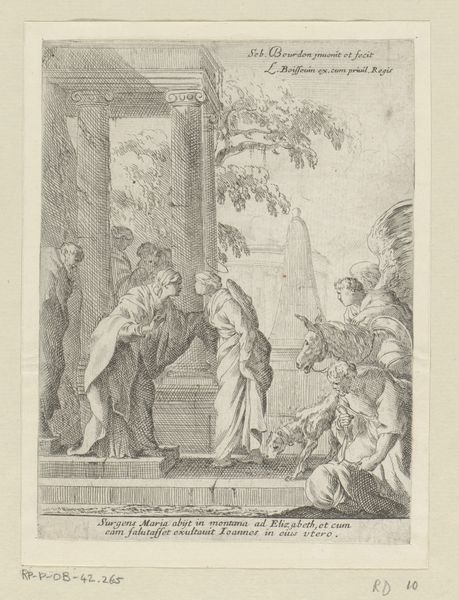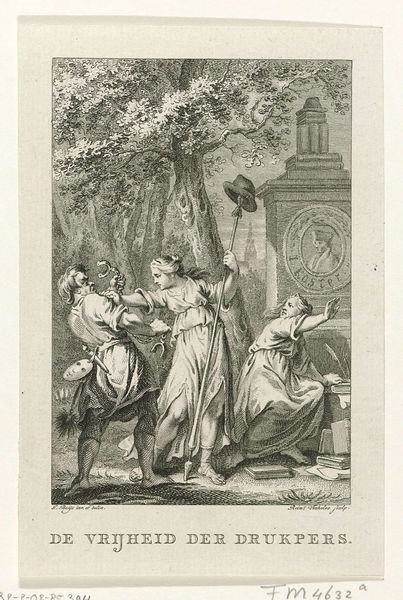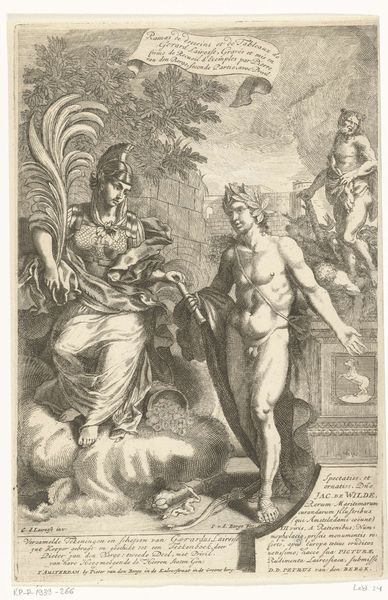
print, engraving
#
allegory
#
baroque
# print
#
old engraving style
#
landscape
#
figuration
#
line
#
cityscape
#
history-painting
#
engraving
Dimensions: height 133 mm, width 84 mm
Copyright: Rijks Museum: Open Domain
Editor: Here we have a print from 1712 called "Amstel gelauwerd door Poëzie," which translates to "Amstel Laureled by Poetry," made by an anonymous artist. The material, engraving, feels precise. It depicts classical figures in what appears to be a cityscape. I'm struck by how overtly allegorical it seems. How do you interpret this work? Curator: Well, considering its time and context, this print presents Amsterdam through allegory, serving a very specific civic function. Think of the early 18th century - Amsterdam, though still wealthy, was beginning to see its Golden Age fade. Images like this were often commissioned to bolster civic pride. The seated woman representing Poetry is crowning the river god Amstel with laurels, suggesting that Amsterdam's prosperity and fame are linked to its artistic and intellectual achievements. What message do you think the cityscape in the background is meant to send to viewers? Editor: It seems idyllic, like a picture of harmony and progress, but maybe it is a deliberately idealized view. Curator: Exactly. The artist isn't just depicting Amsterdam; they are constructing an idea of Amsterdam – a city blessed by the arts, a new Athens, if you will. These images contributed to how people *saw* their city, shaping its identity and, of course, obscuring certain social realities. Who do you think consumed these images? Editor: Probably the wealthy merchant class, to further validate their wealth. It seems to act as visual propaganda, which makes you wonder about the working class experience, too. Curator: Precisely. Considering the political context really shifts how we engage with an image like this. The arts weren’t separate from political goals or marketing of city pride, especially as economic downturn threatened civic pride. Editor: This totally changed how I see the piece. Initially, it just felt like an ornate, slightly distant historical print, but understanding its context really highlights its persuasive power.
Comments
No comments
Be the first to comment and join the conversation on the ultimate creative platform.
